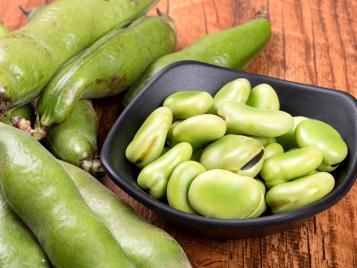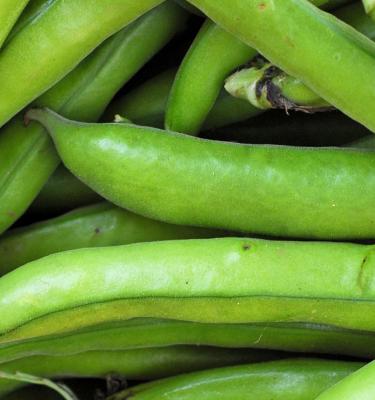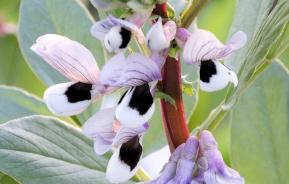Broad beans are a delicious vegetable that’s easy to grow and well worth the space in the garden. The flowers are highly perfumed, the roots trap nitrogen for the next crop, so broad beans are beneficial in many other ways apart from their eating qualities. You should expect to be picking your own crop between June and August.
How to grow broad beans
Cultivation
For best results, grow broad beans in a warm, sunny site. Protection from cold and strong winds will ensure good flower pollination by pollinating insects.
Most soils will give a good crop of beans, but if yours is heavy clay or light sand, then you should dig in some organic matter such as well-rotted garden compost or soil conditioner. Then improve the nutrient level of the soil with a light dressing of a general granular plant food.
Broad bean varieties
Most varieties are called longpods, which should contain 8 or more beans per pod. Masterpiece, Aquadulce and Exhibition Longpod are good, traditional varieties; Witkiem is a more recent introduction. In exposed sites choose a dwarf variety, such as The Sutton.
Although most varieties are sown in spring, you can produce an earlier crop by sowing a winter-hardy variety in late autumn, such as Aquadulce Claudia or The Sutton.
Sowing broad beans
Indoors For a really early crop, sow seeds in individual cells or pots of seed and sowing compost in February. Seedlings will be ready for planting out in March.
Outdoors Sow seeds 5cm (2in) deep in March in a shallow drill with a gap of 20cm (8in) between each seed and cover with fine soil. For maximum use of space, a double row with rows 20cm (8in) apart is normal. Separate each double row by a 60cm (2ft) gap. Then water in well.
Further sowings can be made during April and May for successional crops into early autumn.

How to care for broad beans
Ensure the soil is kept constantly moist - especially when the flowers are setting - and mulch the soil in June and July to conserve soil moisture. A liquid feed applied over the foliage and around the roots every couple of weeks will ensure the plants are fed and watered at the same time and help improve cropping further.
Keep weeds under control with a hoe.
After flowering and when the pods have started to set, nip out the growing tip of each plant. This will direct all energy to producing beans and take away the favourite resting spot for blackfly.
When the crop has finished, don’t pull up the roots, but simply cut off the stems at soil level and compost in the normal way. This will ensure the nitrogen-containing swollen roots are left below ground level to feed the next crop.
Harvesting
You can start to pick the pods when they are around 5-10cm (2-4in) long and cooking them whole.
To harvest them for shelling, pick when the beans begin to show through the sides of the pod and before they get too big. The scar on the picked bean should still be white or green and not become discoloured/brown. Pick them by giving the pod a sharp, downward twist.
| Flowering season(s) | Spring, Summer |
|---|---|
| Foliage season(s) | Spring, Summer |
| Sunlight | Full sun |
| Soil type | Chalky, Clay, Loamy, Sandy |
| Soil pH | Alkaline |
| Soil moisture | Moist but well-drained |
| Ultimate height | Up to 1.2m (4ft) |
| Ultimate spread | Up to 45cm (18in) |
| Time to ultimate height | 4 months |








